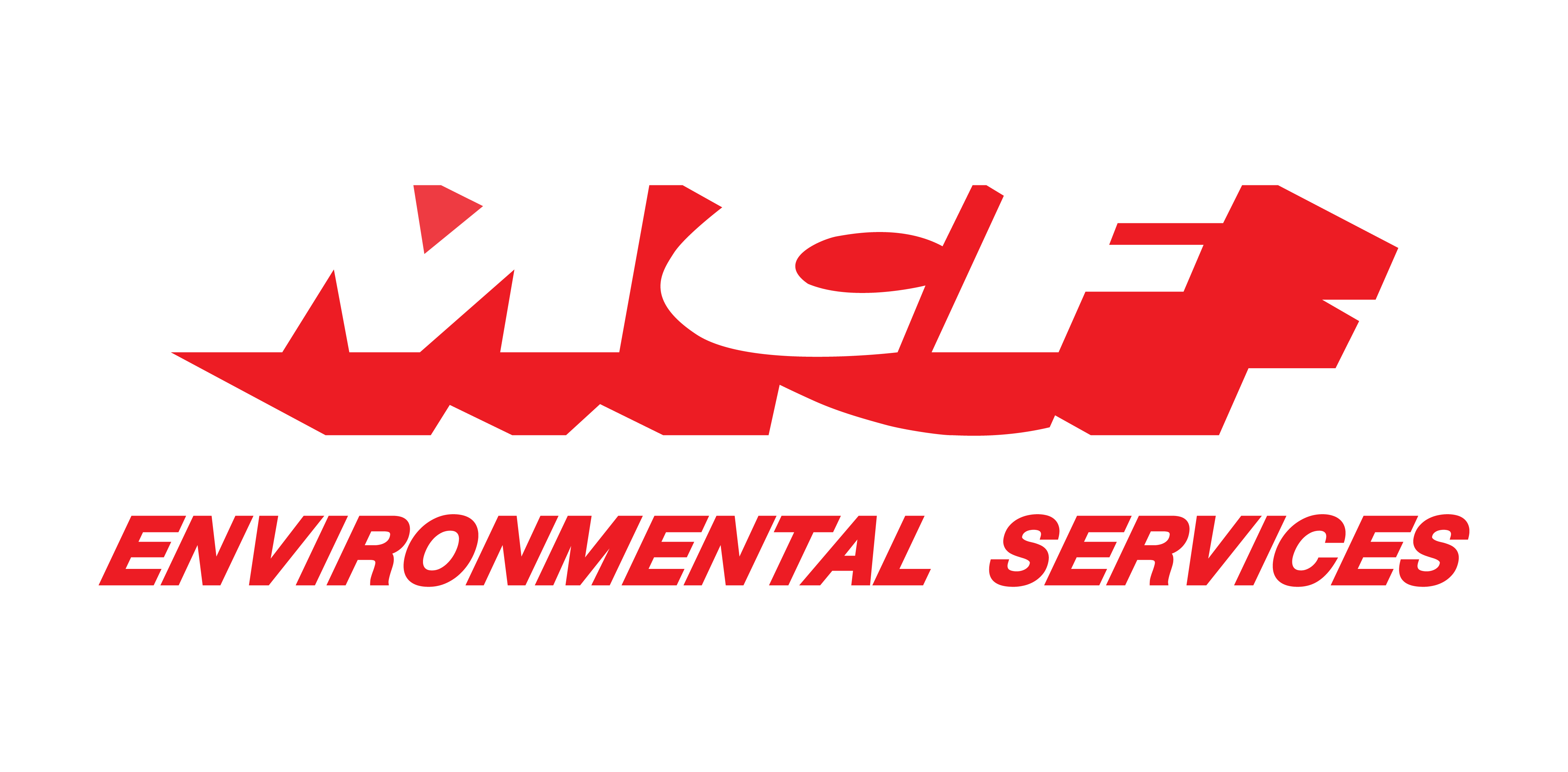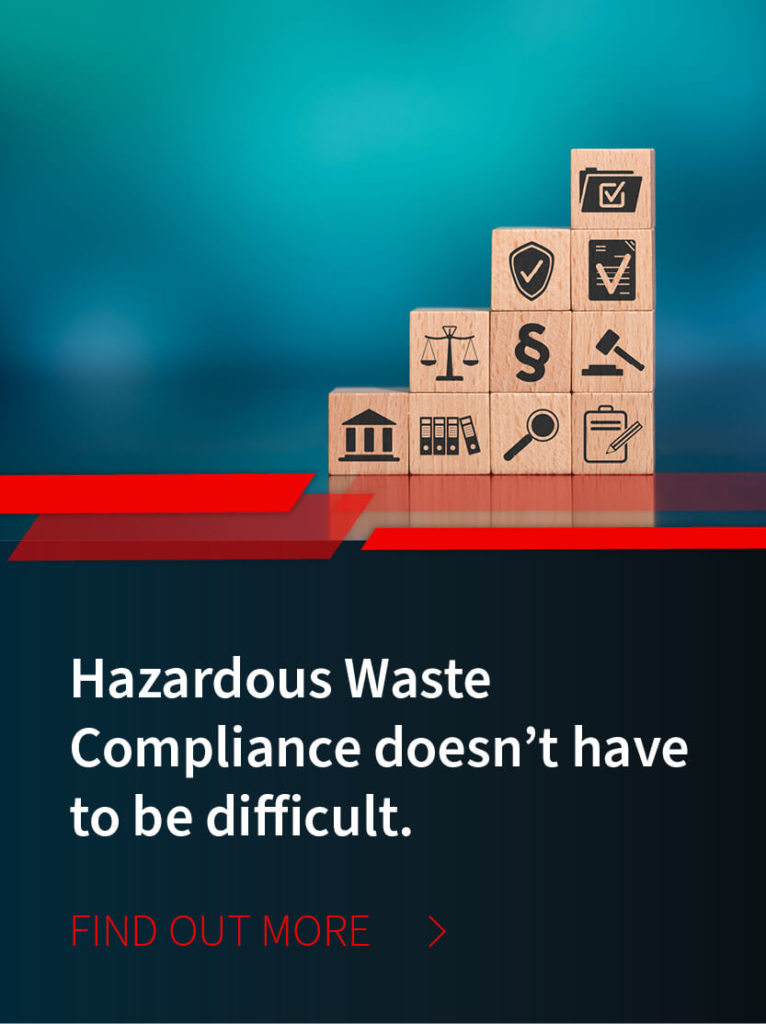
/ IN THIS BLOG
Having a comprehensive school hazardous waste management plan is a critical component of any school or university's health and safety agenda. From primary schools to higher education, academic buildings commonly store chemicals and generate hazardous waste, both through their education departments as well as in their building maintenance needs. Which is why collaboration and education across the institution is so important.
Faculty, facility managers, and administrative offices all need to be on the same page with a concerted effort to manage and dispose of hazardous waste safely and effectively. That’s where a school hazardous waste management plan becomes essential.
Establishing and implementing a legally compliant hazardous waste plan isn’t just critical, it’s non-negotiable. Noncompliance with local, state, or federal regulations regarding hazardous waste can lead to severe consequences, including hefty fines and legal repercussions. These fines can and do happen. In late 2024, for example, the University of Georgia reached a settlement with the Environmental Protection Agency to pay over $300,000 beyond previous fines for hazardous waste violations. The settlement made the news and could further cost the institution in ongoing reputational damage. Beyond financial and reputational ramifications, mismanaging your school’s hazardous waste management requirements could even jeopardize your institution’s accreditation.
To help you navigate these high stakes, here’s a clear breakdown of the steps required to establish and maintain a fully compliant hazardous waste management plan. These four simple steps should give you a great start in achieving and maintaining compliance, providing the security and peace of mind your institution needs to thrive and maintain its good standing.
01 / Step 1: Understand the Need for a Thorough School Hazardous Waste Management Plan
Gaining faculty and staff support requires everyone to understand the importance of a hazardous waste management plan, making it a crucial first step. Without a buy-in, staff members may not recognize the severity of the consequences and may overlook key components. Since some regulations can be complex and hazardous substances can be easily overlooked, providing staff with the education, materials and resources to follow proper protocols will make it easier for everyone to follow.
Your university likely generates hazardous waste that cannot legally be discarded in regular trash or poured down the drain, but are all of your staff aware of this fact? Common items that should be addressed in your plan include:
Paints (including latex, which requires proper disposal)
Oils
Solvents
Gasoline
Expired chemicals
Similarly, smaller universities or startup schools may lack the experience or staff to ensure full legal compliance. Crafting a well-structured hazardous waste management plan is essential to getting everyone on the same page and ensuring compliance occurs.
Understanding National Hazardous Waste Management Regulations for Schools and Universities
Hazardous waste management in schools and universities is governed by the Resource Conservation and Recovery Act (RCRA), which is administered by the EPA. The RCRA establishes a comprehensive framework for identifying, managing, and disposing of hazardous waste to protect public health and the environment. Institutions that generate hazardous waste must adhere to these regulations to avoid penalties and ensure safe operations.
Generator Categories and Requirements
The RCRA classifies waste generators into three categories based on the volume of hazardous waste produced each month: Large Quantity Generators (LQGs), Small Quantity Generators (SQGs), and Very Small Quantity Generators (VSQGs). Schools and universities typically fall under the SQG or VSQG categories but may qualify as LQGs depending on their size and activities. Each category comes with specific requirements for waste accumulation, labeling, storage, and reporting. For instance, LQGs must submit biennial reports and have detailed contingency plans, while VSQGs have fewer reporting obligations but must still ensure proper disposal.
EPA Universal Waste Rule
The Universal Waste Rule is another critical regulation that streamlines the management of common hazardous wastes, such as batteries, pesticides, and certain light bulbs. Many universities generate universal waste during routine maintenance and lab activities, making this rule especially relevant. Schools can manage these materials under less stringent requirements to encourage proper disposal without compromising environmental protection.
State-Level Variations
While the RCRA sets the federal baseline, many states enforce additional hazardous waste regulations that may be stricter than federal standards. Schools and universities must familiarize themselves with state-specific laws to ensure compliance. For example, some states require additional training for staff handling hazardous waste or impose shorter accumulation time limits. Institutions operating across multiple states must navigate these variations carefully.
While federal regulations like the Resource Conservation and Recovery Act (RCRA) set the baseline for hazardous waste management, state and local authorities often impose more stringent requirements to address regional environmental concerns. These additional rules may include stricter waste accumulation limits, enhanced training mandates, or shorter deadlines for disposal.
Navigating this patchwork of regulations can be challenging, especially for schools and universities managing diverse waste streams. Partnering with an experienced full-service waste management provider ensures compliance at every level, streamlining processes, reducing liability, and allowing institutions to focus on their core educational mission with confidence.
02 / Step 2: Research and Choose a Reputable Local Hazardous Waste Management Service Provider
Once you’ve identified that your school or university generates hazardous waste and are committed to a disposal plan, the next step is finding the right waste management partner. Not all waste management companies are equipped to handle the unique and varied waste streams produced by educational institutions, such as laboratory chemicals, maintenance materials, and universal waste.
Take the time to research and vet potential providers to ensure they have the expertise, certifications, and infrastructure to manage your specific needs safely and in compliance with all federal, state, and local regulations. A knowledgeable and reliable provider will not only help you maintain compliance but also streamline your waste management processes, offering peace of mind and allowing you to focus on your institution’s core mission.
Consider partnering with a full-service hazardous waste disposal company for a more efficient and cost-effective solution. Instead of juggling multiple providers, a single, reputable company can manage all your hazardous and non-hazardous waste streams seamlessly.
A trusted provider will also guide you on compliance, such as how frequently waste must be shipped based on your EPA generator status, helping you avoid potential violations.
Prioritize companies that offer onsite visits to assess your school’s waste. These visits allow them to identify overlooked hazardous materials and provide tailored solutions to ensure full compliance and safety. When you work with MCF Environmental Services for example, you have access to an onsite chemist who can conduct visits and make authoritative recommendations. This type of full-service treatment is essential to making sure no sources of hazardous waste are overlooked.
Checklist for Choosing the Right Hazardous Waste Management Provider
Verify Certifications: Ensure the provider is licensed and certified to handle your specific types of hazardous waste, meeting all federal, state, and local requirements.
Check Reviews and Testimonials: Read online reviews and seek testimonials from similar institutions to gauge the company’s reputation and reliability.
Request References: Ask for references from other schools or organizations with similar waste streams to validate their experience and service quality.
Schedule a Consultation: Meet with the provider to discuss your needs and assess their communication style, responsiveness, and understanding of your requirements.
Review Service Capabilities: Confirm they can manage all your waste streams, including specialized ones like lab chemicals or universal waste, and offer compliant disposal solutions.
Evaluate Cost Transparency and Reliability: Request a detailed quote to understand the full scope of services and costs. Keep in mind that the cheapest option isn’t always the best—choosing a low-cost provider without proper expertise can lead to compliance issues, additional fines, or costly cleanup efforts. Prioritize providers who offer transparent pricing and a proven track record of handling waste safely and legally.
03 / Step 3: Create a Comprehensive List of Waste to Include in Your Hazardous Waste Management Plan
Once you’ve chosen a reputable waste service provider, it’s time to use their expertise to your advantage. Schedule site audits so that you can accurately determine the waste your institution creates and also understand the specific services your facilities will need for proper waste disposal.
Primary/High School Hazardous Waste Management: Sample Departments and Waste Types
Although not a comprehensive list, here are some items which may fall under the need for hazardous waste disposal:
Art Department
Oil-based paints and solvents
Expired chemicals (e.g., acids, bases, and reagents)
Aerosol cans (e.g., spray paint)
Cleaning chemicals containing hazardous substances (e.g., turpentine)
Science Labs
Biological specimens preserved in formaldehyde
Mercury-containing devices (e.g., thermometers and barometers)
Maintenance Department
Pesticides, herbicides, and fertilizers
Paints (oil-based or containing heavy metals)
Pool treatment chemicals (e.g., oxidizers and chlorine compounds)
Health Office/Nurse’s Station
Medical sharps (e.g., needles, syringes)
Expired medications classified as hazardous waste
Custodial Staff
Industrial cleaning products with hazardous chemicals
Fluorescent light bulbs and other mercury-containing lamps
Woodshop/Industrial Arts
Oil-based stains and finishes
Adhesives containing hazardous VOCs
Similarly to primary schools, universities will have a variety of items across departments which need to be included in a hazardous waste plan:
University Waste Management: Sample Departments and Waste Types
Medical Labs: Biohazardous waste
Art Department: Paints and flammable solvents
Maintenance: Groundskeeping chemicals, cleaners, paint, and pool treatment chemicals
Teaching Laboratories: Hazardous chemicals, pathological waste (dissection specimens)
04 / Georgia rules regarding transfer of biomedical (hazardous) waste
A clear, actionable plan is the backbone of any effective hazardous waste management strategy. Begin by outlining the specific steps your school will take to handle hazardous waste, including identification, segregation, storage, and disposal.
Assign roles and responsibilities to key staff members to ensure accountability, and establish a schedule for regular waste pickups, inspections, and staff training. This plan should be detailed yet flexible enough to adapt to new regulations or changes in your waste streams.
To streamline this process, collaborate with your hazardous waste disposal partner. Their expertise can help you create a comprehensive action plan tailored to your school’s unique needs, ensuring compliance with all federal, state, and local regulations. They can also provide essential support, such as guidance on labeling and storage practices, assistance with documentation, and updates on regulatory changes.
Strict enforcement of your plan is critical—regular audits and clear communication with staff will ensure your school consistently adheres to best practices, minimizing risk and maintaining a safe environment for students and faculty.
MCF Environmental Services is experienced with the management and disposal of hazardous waste for schools and universities. We provide full-service disposal to ensure your full compliance with local, state, and federation regulations. No matter where you are in the process of crafting your school’s hazardous waste management plan, reach out to MCF. We can help you create a plan that is both comprehensive and easy to implement across your facilities.
Robert Losurdo
President, COO








